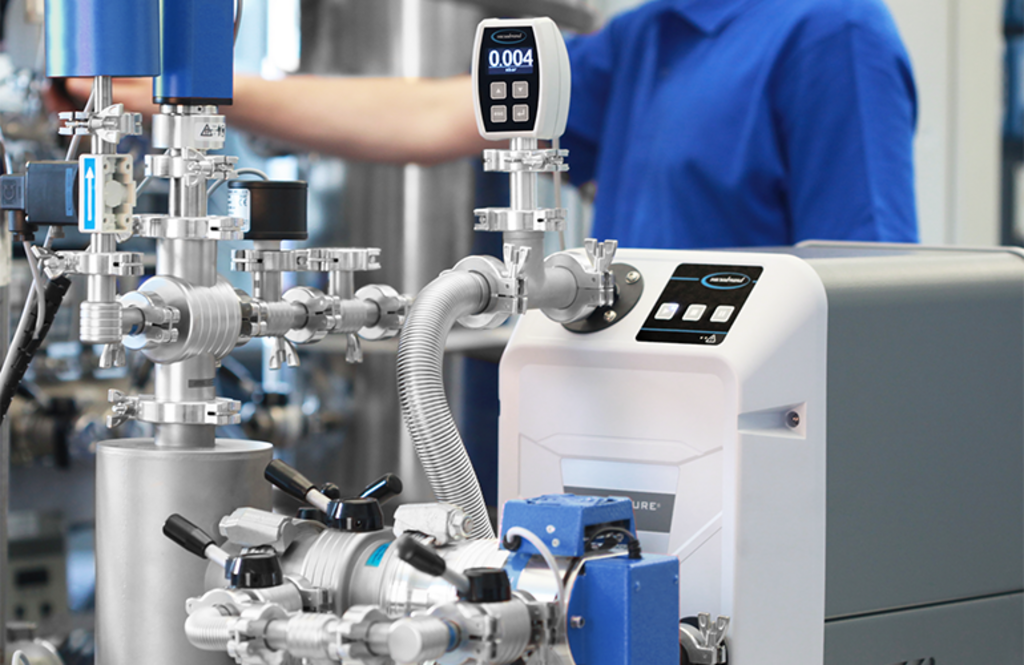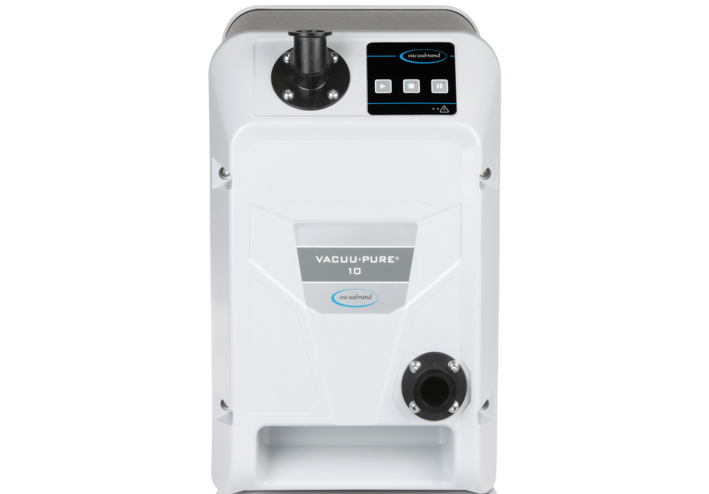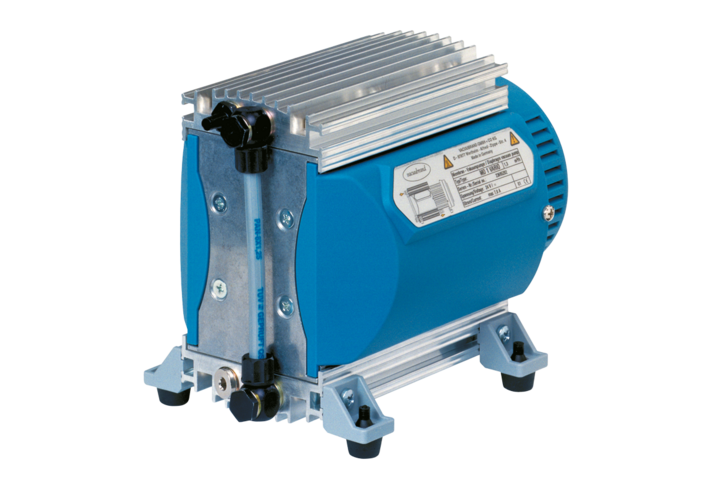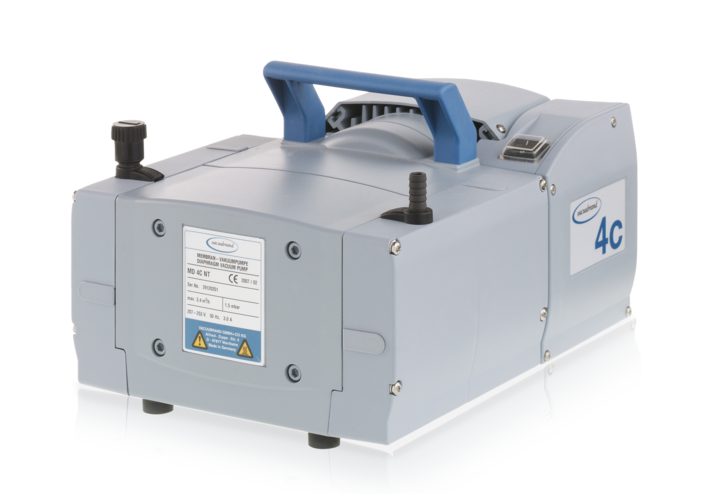How to Choose a Roughing Pump for a Turbo Pump
Many analytical applications, including mass spectrometry, electron microscopy, and surface analysis, rely on creating high vacuum conditions. Turbomolecular pumps are a key part of this process, as they enable the generation of high vacuum levels that oil-sealed roughing pumps alone cannot reach. However, turbomolecular pumps cannot compress gases all the way to atmospheric pressure; they require a reliable roughing pump, also called a backing pump, to maintain the necessary fore vacuum conditions for stable operation.
Pairing your turbomolecular pump with the right roughing pump is critical. The right combination not only protects the high vacuum pump but also ensures reliable pump-down times, stable foreline pressure, and clean vacuum generation, which are essential for sensitive analytical results.

Why Turbo Pumps Rely on Backing Pumps
A turbomolecular pump operates effectively only when its foreline pressure remains well below atmospheric levels. The roughing/backing pump maintains this fore vacuum, continuously removing gases that the turbo pump compresses but cannot fully discharge on its own. Without a properly sized and selected backing pump, the turbomolecular pump cannot reach its designed compression ratio, which can lead to reduced performance, overheating, or even shutdown.
Using an oil-free diaphragm pump for fore-vacuum generation is often preferred for analytical and semiconductor processes, as it significantly reduces the risk of hydrocarbon contamination and supports clean, dependable vacuum generation.
Process Requirements to Consider
If your high vacuum system operates without significant process gas load, the ultimate vacuum of the backing pump can be assumed to equal the available backing vacuum. In this case, the pump’s volume flow rate mostly affects pump-down time. However, if there is a continuous gas load (for example, from process gases, outgassing, or leaks) the backing pump must have sufficient speed to ensure the turbomolecular pump’s maximum permissible backing pressure is not exceeded.
Reliable operation demands a roughing pump that can maintain stable foreline pressure even under variable gas loads. For this reason, dry vacuum pumps such as oil-free diaphragm pumps with high pumping speed close to their ultimate vacuum are an excellent choice for many laboratory and analytical setups.
Choose the best model for your lab with the vacuum selection guide, or reach our team with the contact form.

Key Backing Pump Requirements
When selecting a roughing pump for your turbo pump, several performance factors are important:
- Ultimate Vacuum: The pump must reach a vacuum low enough to meet the backing pressure requirements of the turbomolecular pump, often down to around 0.3 mbar, depending on your specific system.
- High Pumping Speed: The pump should deliver high pumping speed even near its ultimate vacuum to shorten pump-down time and maintain a safe foreline pressure during operation.
- Low Power Consumption: Energy efficiency helps keep operating costs under control.
- Anti-Suckback Protection: Low leakage rates and reliable anti-suckback design prevent contamination or venting if power is interrupted.
- High Reliability: Look for pumps designed for continuous, around-the-clock operation.
- Condensate Tolerance: Good resistance to vapors and condensates extends service life and reduces maintenance.
- Stable Operation: Ultimate vacuum stability and infrequent service intervals help maintain consistent conditions for the turbomolecular pump.
- Compact Design: A small footprint, low weight, and minimal vibration support easy integration into your setup.
Backing Pump Types for Turbo Pumps
Oil-free diaphragm pumps are an excellent choice for many applications where clean vacuum and hydrocarbon-free pumping are required. They deliver reliable performance and simple operation with minimal maintenance. Rotary vane pumps are another option when higher pumping speeds or lower ultimate vacuums are needed, but they do carry the risk of oil backstreaming into the system. Scroll pumps can also be a suitable oil-free alternative for higher speeds. Many operators prefer dry roughing pumps when contamination control and minimal maintenance are priorities.
Selecting the right vacuum pump type depends on your specific requirements for vacuum level, cleanliness, and system compatibility.
Sizing Your Roughing Pump
Proper sizing ensures that your backing pump can handle both pump-down and continuous operation without compromising your turbomolecular pump’s performance. A simple way to estimate the required pumping speed for pump-down is:
For continuous operation, match the pump’s speed to the total gas load and ensure the pump can maintain the required foreline pressure under all conditions. Always check the pumping speed curve at the relevant foreline pressure, not just the nominal maximum speed.
Recommended Solutions from BRANDTECH
Each vacuum pump is engineered for quiet, reliable operation with minimal maintenance, helping you achieve clean, stable vacuum conditions for sensitive applications.
How can we help with your lab vacuum?
By carefully considering your specific application needs and the features of available pumps, you can find a vacuum pump that will provide reliable and efficient performance for years to come. If you have any questions, reach out to our customer service at Phone: 1-888-522-2726 | Email: info@brandtech.com



